#and INCLUDING multiplayer spinoffs like four swords
Text
random userbase data time
(listed almost every/every game as one option in case you skipped out on some of the multiplayer ones)
please reblog after you vote for Maximum Data, even if you voted no! if you voted for one of the other options, tag your favorite game(s)!
I am just very interested in the presence of the zelda fanbase :>
please note that, for the sake of this poll, remakes count as one game. so like, if you've played the original ocarina of time and master quest and the 3ds version, that counts as one game.
#by the way! there are currently 19 games#including breath of the wild and not counting tears of the kingdom or any remakes#and INCLUDING multiplayer spinoffs like four swords#I have played them all except for triforce heroes#legend of zelda#polls#random stuff#ocarina of time#skyward sword#twilight princess#breath of the wild#zelda is my favorite franchise of all time. I can talk about it for so long#god I hope this works
10K notes
·
View notes
Note
6 from the meme if its ok to ask, you can include spinoffs?
I've never played any of the Four Swords titles. The hook-up for the multiplayer looks complicated and outside of the occasional fighting game (Smash Bros., old school Street Fighter), I tend to not like multiplayer games. I am very much a solo-gamer, so just about anything that's multiplayer looks too intimidating to me.
(Yes, I have played Triforce Heroes. I didn't get far. I did not like it).
1 note
·
View note
Text
Something I've noticed with the Zelda series is that for almost every major Nintendo home console, two big Zeldas get released. The first one is subject to very little debate and becomes one of the 'flagship' games of the series. It sets the precedent. It's 'one of the good ones', 'what all Zeldas that come after it should aspire to be'. This includes Zelda 1, A Link to the Past, Ocarina of Time, Twilight Princess, and Breath of the Wild.
Then the second one comes out a few years later. A lot of people hate on it *basically* for daring to deviate from the first one and trying to do something new. Like, you know, any decent video game series should aim for as it progresses so it doesn't stagnate? These games certainly have their fans, but they're labelled as 'divisive', 'a flawed experiment', or 'weird and niche' at best, and 'one of the bad ones' at worst. This group includes Zelda 2, Link's Awakening, Majora's Mask, and Skyward Sword.
Wind Waker is a bit of an outlier because it was the only mainline single player Zelda developed specifically for the gamecube. It's often either overlooked or treated as inferior largely for being different, so I'll put it in with the latter group. (The four swords games and triforce heroes are kinda hard to classify for various reasons but they've always felt more like spinoffs to me, and they're multiplayer whereas most Zeldas are single player, so I think I'll put them with the general spin-off group like Hyrule Warriors, Link's Crossbow Training, and Cadence of Hyrule. We don't talk about the cd-i Zeldas on this blog.)
This all happens nearly like clockwork (haha, get it, the clock tower from Majora's Ma-), and frankly, I wouldn't be surprised if it happened with Breath of the Wild 2, especially since it's gotten so much hype and so much tension is being built by the long silence from Nintendo about its development. Nintendo certainly isn't setting it up to fail, but I'm afraid it'll fall prey to that pre-established pattern.
Botw is now 'a flagship title', one of 'the good ones', 'what every Zelda that comes after it should aspire to be', and botw2 is going to be held up against it, probably even after it gets a more official title and even if it gets released on a later console. Just like Zelda 2, Link's Awakening, Majora's Mask, Skyward Sword, and to a different extent, Wind Waker are. And a lot of Zelda fans (the obnoxious gamer bros, mostly) only *really* like change when it's relatively predictable and comes at a slow, fixed rate. If you veer too far off course too quickly, your game is now 'one of the divisive ones', meanwhile the earlier game for the same home console gets to be judged more on its own merit because it was the standard setter.
Maybe botw2 will break the curse, and if it does then I hope it's because fans are more receptive to change then it being extremely similar to botw and thus a safe bet. I'm not gonna hold my breath though (haha, get it, Breath of the Wi-)
And lol who cares about the Zeldas developed for handheld consoles, amirite or amirite? It's not like they consistently bring something new and interesting to the table and tend to get unfairly overlooked regardless of how fun and innovative they may be. Like remember how Spirit Tracks lets you actually play as Zelda (albeit as a ghost inhabiting a suit of armor) and she spends the whole quest working with Link actively instead of from the shadows or in some other vague, mostly off-screen way? Yeahhh well too bad, because it's not only handheld, but is in the toon Link vein, so it's barely brought up.
And Wind Waker is a home console game, but it gave more depth to Ganondorf than any other entry I've played. Not *a lot*, but enough to make you maybe sympathize for him a bit and wonder what else he has going on. It could easily be a starting point for Ganondorf being so much more than just the big bad that gets reincarnated every now and then because uh... He's eeeevil and power hungry. Buuuut it's also a toon Link game that went in a lot of new directions, so again, you don't hear about it a ton.
Anyway, I've played most of the Zeldas both mainline and spin-off (from the Zelda wiki about the series that lists all the games, I count 17 I've played, most to completion) and I've enjoyed all but 3 of them; Four Swords, Phantom Hourglass, and Breath of the Wild (blasphemy, I know). But even those 3 I certainly didn't hate, I just didn't like them. Zelda is one of the most consistently qualitative video game series there are, and yet so many Hardcore Gamer Bros frequently treat a notable number of Zelda titles like garbage, and they're the loudest subset of the Zelda fandom, so a lot of people treat their opinion as fandom consensus or common sentiment.
Tl;dr I'm being salty about Zelda again.
6 notes
·
View notes
Text
Goty 2019

Hey. It’s game of the year 2019 baby. By now you know the kinda justice we seek on these streets, so no long-winded introductions, except to remind you that these aren’t reviews, and honorable mentions have been moved down to the bottom this year because we're evolving.
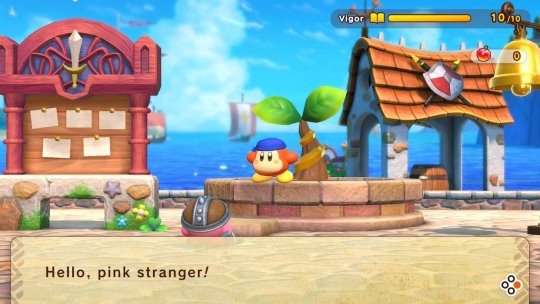
12. Super Kirby Clash (Switch) - A free to play online Kirby spinoff centered around combat that features microtransactions sounds like an awful idea on paper, and yet it’s somehow my most played multiplayer game of 2019. I won’t try and present the game as anything more than what it is, which is basically a very (very very very!) simplified, arcade-y Monster Hunter game with a very (very very very very!) cute aesthetic. But as a recent convert to Monster Hunter and a longtime Kirby lobbyist, it turns out that that’s all I need to play a game for nearly 100 hours. The four classes all have varied abilities, gameplay and roles to play, and there’s nothing more satisfying than freezing time as the mage in the middle of an enemy’s jumping animation. I found the microtransactions to be completely fair, as I spent around 10 dollars total on the game and never found myself hurting for apples (the game’s main currency and the only one you can buy with real money) to upgrade my equipment. This isn’t a game I would be able to recommend to everyone, but if it’s your type of thing then it’s going to be very much your type of thing.

*Image credit: 505 games
11. Bloodstained: Ritual of the Night (Switch/PS4/Xbox One/PC) - Despite horrible first impressions from my backer copy of the Switch version, Bloodstained really ended up delivering the true Castlevania: Symphony of the Night successor it promised to be, and I had a fantastic time with it (after trading in my Switch version and begrudgingly purchasing a PS4 copy). While I love almost all of the Castlevania games in their own ways, even the best entries post-SotN didn’t end up feeling much like SotN. Bloodstained, meanwhile, wears its inspiration on its sleeve. Or rather on its wolf hood and gas mask combo.
Obscure, bizarre, and goofy secrets are around every single corner of the castle. I mean, like, really esoteric ones that I can’t imagine having found without a guide. From the myriad of hidden (and very challenging!) boss fights, to trophies popping for playing a piano while having a fair familiar out to entire sprite based areas, the surprises never stop being thrown at the player. It adds so much goofball flavor to the game that’s missing from just about any other entry in the genre, and it does the brunt work in giving this game its identity.
Not only are the secrets plentiful and good, but the combat is also excellent; much like a couple entries in the latter Castlevania games, just about every single enemy in Bloodstained has a chance of dropping you a shard upon defeat, and each one gives your character Miriam a new ability. Some of these are simple passive buffs, while others completely change your combat options. From ghostly portrait guardians to giant dentist drills coming out of your hand to summoning disembodied dragon’s heads, the shard system is never not entertaining, and leaves the player so much room for experimentation and realizing their ideal build it’s actually a wonder they were able to bug test this thing at all. And truly, the main issues holding Bloodstained back from true greatness are its technical issues. Which is a shame, and seemingly an issue on all platforms. But if you can handle a hard crash here or there, you’re in for a treat.

10. Fire Emblem: Three Houses (Switch) - I never thought I would care at all for any Fire Emblem game. Certainly, I saw the appeal of them prior to Three Houses, but they just never seemed like something I would want to devote a lot of time to. But putting the game in a school setting and recontextualizing your soldiers as students really made a huge difference for me, and I bonded with the characters in the game in a way I normally reserve for my Pokemon teams. And unlike Pokemon, I can marry my students, which is beautiful and horrifying.
There are definitely issues with Three Houses. A silent protagonist has no right starring in a game like this, especially with all the emotional story beats the game is trying to pull off. The writing in general was also all over the place, ranging from odd decisions with both the characters as well as the overarching story (some of this is remedied by replaying the game multiple times and going down different routes, but I put 60 hours into the game and couldn’t even finish two paths, so that’s a bit unrealistic). Lastly, the monastery that serves as your school needs just a tad more variety in activities to do in between the battles, as what started out as my favorite part of the game became a chore for the last dozen or so hours.
All of that said, I am anxiously waiting for the sequel, as the foundation that’s been put down here could lead to something truly special. As it stands, this is the best secret Harry Potter game ever made, and that alone is going to have a lot of appeal to a lot of people.
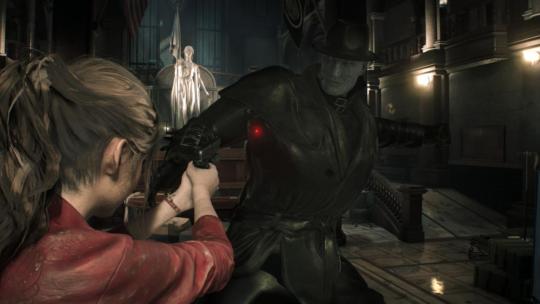
*Image credit: Gamespot
9. Resident Evil 2 (PS4/Xbox One/PC) - Truly, I have never been more stressed out when playing a game than the first time I had to start dealing with Mr. X. Yes, on each subsequent playthrough (of which I did many!) and even encounter he became less of a threat and more of an annoyance, but much like a good horror movie, that first time will remain embedded in my brain as one of my most memorable gaming moments.
And that kinda sums up Resident Evil 2 as a whole for me. An amazing, unforgettable start in the police station, followed by a somewhat middling second act in the sewers, and ending on kind of a weirdly short whimper in a very tonally different setting than the rest of the game. And that’s without getting into how disappointingly similar the “B” playthroughs of either character were to their “A” counterparts. It was all still great, mind you, and the gameplay and scares remained excellent throughout. But man was that first act in the police station something truly special, and I’m hopeful that the eventual remake of 3 keeps more of that tone throughout.
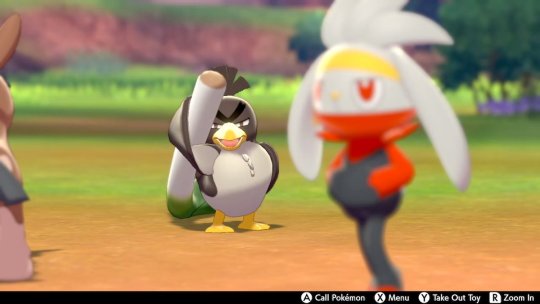
8. Pokemon Sword/Pokemon Shield (Switch) - Cutting hundreds of Pokemon was pretty close to the bottom of my list of concerns going into the latest Pokemon. The series hasn’t really grabbed me in a major way since Black and White on the DS almost 9(!) years ago, and I had largely accepted the idea that I was finally growing out of the franchise. While this 8th generation of Pokemon titles is far, far from perfect, and in fact doubles down on a lot of the aspects I don’t like about modern Pokemon games, Sword has become my favorite entry in the series in a very long time.
This is down to two things: my favorite batch of new Pokes the series has ever had (Galarian Farfetch’d, my prince............) and the introduction of multiplayer coop content with raids. The former is subjective I suppose (but seriously, Galarian Farfetch’d), and the appeal of the raids is going to be dictated by how into repetitive content you are and if you have people to raid with. I’m fortunate enough to love repetitive tasks in video games, especially repetitive tasks that amount to fighting and capturing giant monsters for rewards, and to have a partner to enjoy those repetitive tasks with. We lost entire weekends to hunting down new raid opportunities in Sword, and this feels like the first major step the series has taken in nearly a decade to try and reengage me in a meaningful way.
And don’t get me wrong: Pokemon has a long way to go to bring me entirely back into the fold. The dungeons are nonexistent, the routes are largely completely straightforward affairs, the post game content is so light that “barebones” feels like a generous descriptor, and the performance issues in the wild area (the game’s more open, free roaming space) are inexcusably awful when played online. I hope by the time the 9th generation games roll around that we’ll get a bigger advancement than what’s been seen here, but to me, this feels like an all around better made product than any of the 3DS entries, with or without Galarian Farfetch’d.
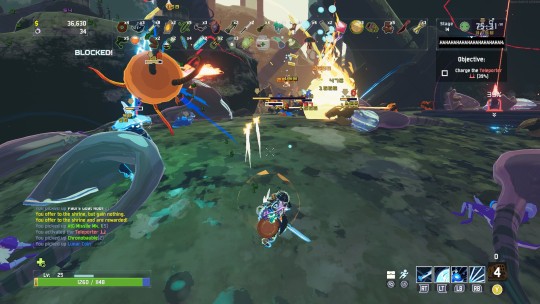
7. Risk of Rain 2 (Switch/PS4/Xbox One/PC) - The original Risk of Rain is a personal all-time favorite, so seeing the developers successfully make the jump from 2D to 3D while still maintaining everything I love about the first game is a truly remarkable feat. Both games sport essentially MMO-lite combat with abilities dictated by cooldowns and items that you get from chests and bosses, with rogue-like progression and permadeath. That’s a lot of jargon even for me talking about video games, so essentially: keep shooting things and powering up by grabbing items and defeating bosses, and when you’re dead you’re dead (bar a specific item), rinse and repeat.
It’s deceptively simple while being endlessly replayable. The true fun comes in when playing with other people, as every character plays completely differently, and figuring out builds for each person on the fly is extremely fun and rewarding. This also means that if you start getting bored of one character, simply play a different one on your next run. Add in an extremely moody sci-fi aesthetic (including one of my favorite soundtracks of the year) and that’s Risk of Rain.
The main issue with Risk of Rain 2 at this point is that it’s simply unfinished, and won’t even have an actual ending state until spring of 2020. This doesn’t hamper my enjoyment of the game much, hence it being on this list, but I imagine a lot of people would be bothered by it. The developers have done a great job of updating the game at a decent pace so far though, and every major patch has come with a new character, among a ton of other things. And if I’ve already gotten this much enjoyment out of an early access title, it’s exciting to think about a feature complete version down the line. And hopefully that feature complete version of Risk of Rain 2 includes the Chef character from the first game *ahem*.

6. Astral Chain (Switch) - In a year full of some real dang weird yet shockingly great games, Astral Chain stands tall as probably the weirdest surprise of them all. You’re a future cop fighting invisible ghost demons from an alternate dimension with your own invisible ghost demon chained to you through some high tech handcuffs. That’s just the first half hour of the game, and it ratchets up the anime nonsense many magnitudes over in the course of its 20ish hour runtime. And it’s great and stupid.
It’s not just the plot that’s over the top, though. Coming from developer Platinum Games, renowned for their nonstop super sweaty action portfolio, Astral Chain spends just as much time tasking the player with exploring its world, characters, and lore as it does asking you to punch enemies the size of skyscrapers (or bigger). It’s a formula that works shockingly well, as I found myself enjoying the downtime segments just as much, if not more, than the action portions of the game. And the action that is there doesn’t really play like your typical Devil May Cry or Bayonetta, either; the player character, while critical to pulling off combos and the like, is not your primary damage dealer, with that role being fulfilled by your five “legions” (the aforementioned ghost demon buddies), all of which have different strengths, weaknesses and abilities. The gameplay ends up feeling kind of like a realtime Pokemon game by way of JoJo’s Bizarre Adventure, and no sentence I’ve ever written has been as cool as that one.
I do think Astral Chain falls a bit short in the combat department, at least compared to other games in the genre. It’s a bit too simplified, despite how crazy looking and overwhelming the actions you and your legions end up doing can be, and I think that the obligatory Platinum-style grading system in this is very poor - it doesn’t seem to grade overall performance so much as it just wants you to constantly be switching your legions in the midst of battle. Which is a great lesson to teach your players, but I would also like if anything else about my combat performance seemed to have significant weight on my grade. Having said all that, it’s a flaw that I found much easier to overlook in the midst of battle when I sent my wolf legion ahead of me, biting and tearing its way through a cluster of enemies, while I hung back inside of my punching legion, finally able to fulfill my years-long Star Platinum “ora ora ora” fantasies.

5. Anodyne 2: Return to Dust (PC) - There’s a lot going on in Anodyne 2, and I fear trying to describe it in words, not only because of all the jargon I’d inevitably have to use, but also because I’m not sure I can do the game justice. To that end, here’s a brief trailer of the game to get you started:
youtube
If you find that trailer at all intriguing, Anodyne 2 is definitely for you. And if you’re still skeptical, know that the game has far more to offer than just its (beautiful) low-poly aesthetic. While visually it’s obviously most evoking Playstation 1 era games such as Mega Man Legends, in terms of the tone of its writing it strikes a pretty peculiar balance between Earthbound and Nier: Automata (names I do not invoke lightly!). The visuals aren’t just an aesthetic choice, either - throughout the game you find yourself in 2D overhead areas, solving puzzles inside of the minds of other characters, and these varying layers of abstraction serve to further the game’s message and atmosphere. And it’s all of these things combined that pushed Anodyne 2 over the edge of “memorable” and into the realm of “haunting” for me.
It’s a game that wants to be played and experienced by everyone; you can tell how much love was put into every single corner of the world, every line of dialogue, and each and every single goofy joke. Steven Universe (another seeming inspiration of the developers) is the only other piece of media that has reminded me of just how lost and alone I’ve felt at various stages of life, while choosing not to dwell on that and instead using it as a launching pad to remind me of just how far I’ve come. As the game itself says, Anodyne 2 is a game about life, and I’ve rarely come across one that felt so full of it.

4. Judgment (PS4) - With the release of Yakuza 0 a couple of years ago, the Yakuza games went from a series I was vaguely aware of in my periphery to maybe my all-time favorite video game comfort food. They’re silly, melodramatic, sad, and beautiful, tonally swinging back and forth like a large imposing guard wildly trying to hit Kiryu with a couch section. Most importantly, they manage to feel heartfelt and personal in an age where high budget games seldom feel anything of the sort. I was initially hesitant, then, to play a spinoff that threw aside its entire cast of established characters for a crew that dabbles in detective and lawyer work; I didn’t think there was much of a chance that this new band of very handsome crimeboys with hearts of gold would be able to compare to Kiryu, Majima and the like. How glad I was to be wrong, as Judgment is now maybe my favorite of the Yakuza games I’ve played.
By pulling further out (but not completely away) from the culture of organized crime as the central driving factor of the story, you no longer need to memorize a dozen different yakuza organizations and all of their subsidiaries and patriarchs within, nor do you have to try and remember which side is feuding with who. And that isn’t to say that the story doesn’t have just as many twists and turns; it does, and despite the larger scale of the stakes, ends up feeling more focused and personal. I also found it easy to bond with the two main characters, Yagami and Kaito, as not only do their personalities play off of each other very well, but they simply share more screentime together than I’ve ever seen Kiryu get a chance to do with anyone. Truly, the story ended up being one of my favorites in the entire medium, and I fell in love with the characters to the point where I got misty eyed during the credits.
With regards to gameplay, it’s a Yakuza game. Which means a lot of running around Kamurocho, talking and shopping and playing minigames and brawling. Since the player character in this entry is a detective, there are various mechanics and events related to the profession, such as investigating crime scenes and tailing suspects, but they’re by far the weakest part of the game, and you shouldn’t come to this game looking for incredible detective gameplay. Instead, come to the game for literally everything else it offers, because it’s a fantastic experience all around, and a great jumping on point for anyone unfamiliar with Yakuza.

*Image credit: Steam user Symbol
3. Sekiro: Shadows Die Twice (PS4/Xbox One/PC) - Frankly, I did not much care for Sekiro for the majority of my first play through. Specifically, I dreaded its boss fights. To go from the sheer joy of being able to dispatch a courtyard full of enemies in any way I pleased in the game’s relatively free form stealth sections, to being killed in a matter of two or three hits to every single boss and miniboss was frustrating; how could I not groan when I started that duel with Genichiro at the top of the castle, knowing full well that I was going to be stuck there for a few (or more) frustrating hours? It wasn’t until the fight against the protagonist’s father figure, Owl, hours later at the same location as the aforementioned Genichiro fight, that something clicked. It only took around 30 hours, but suddenly, instead of approaching the situation like a Dark Souls or Bloodborne boss, I was not only being defensive, but I was being aggressively defensive, parrying nearly every single blow. Suddenly it was me standing in place, baiting out my opponent’s attacks only to throw the force of his own momentum back at him. Suddenly combat made sense in this damn game. And suddenly I was dead again in a quick three hits after inhaling some magic gas that prevented me from being able to heal. But that was ok! Because suddenly this game was amazing, and suddenly I had completed it four times and adored every second of it (except for that fucken four form final boss with no checkpoints).
I still stand by my (and a lot of other’s) original complaint that the disparity between the freedom offered in the rest of the game compared to the unflinchingly rigid roadmap you have to follow in fighting the bosses is jarring game design, and it’s very fun to imagine a version of Sekiro that lets you approach bosses any which way you like. On the other hand, no other game that I’ve ever played, not even Sekiro’s predecessor and my favorite game of this console generation, Bloodborne, has come anywhere close to making me feel this cool when fighting bosses. And that’s a mighty impressive accomplishment on any game’s part, speaking from the perspective of an overweight, sweaty, hairy, very uncool man.
But really, fuck that final boss though.

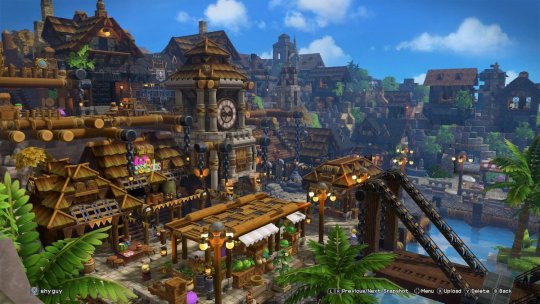
2. Dragon Quest Builders 2 (Switch/PS4/PC) - When we were around 10-years-old, one of my best friends, Patrick, used to host fairly regular Lego-building sleepovers, where everyone built whatever they wanted, and our creations were then showcased to the rest of the group. Being that the group consisted entirely of pre-pubescent boys, this meant building various robots or cars, all of variable quality/ability to stand upright. During one of these nights, in lieu of the usual deathbot piloted by the ghost minifig, I instead constructed a little bunker for the ghost - a place where, after a long day of being forced (by me) to pilot his mech suit and commit unspeakable acts, he could hang up his ghost hat and be forced (by me) to ponder the morality of his actions. It was just a tiny little room with the necessities: bed, table, bookshelves and pizza, but when presenting it to my friends I proudly declared that the bunker was also located at the bottom of the ocean, a factor that couldn’t be visually represented due to the harsh limits of time, Lego pieces and my ability. I was pretty proud of my cool-down chamber, but if memory serves correctly, it was Patrick’s no doubt boorish creation that was the apple of everyone’s eye. And who am I to try and convince a room full of my peers that actually, a secluded room where you could read in peace for all eternity was much cooler than a punching gorilla bot?
This is all to say that I have never been a creative type, especially when it comes to building. I had previously played Minecraft and the first Dragon Quest Builders, and while I enjoyed them, there wasn’t quite enough there to make me want to engage with them on a level beyond just playing them like any other game - I don’t think I ever built anything in DQB1 that wasn’t required for the sake of progression in the main story, and the less said about my Minecraft efforts the better. Builders 2 expertly sidesteps this issue by wrapping its building mechanics around an engaging and hearfelt story (I got teary-eyed multiple times!), great characters (especially the main character’s mysterious best friend/partner in crime, Malroth) and a lovely localization. It also encourages more freeform building than the previous game by tying the progression of the story to the progression of your main, customizable island. You don’t ever really have to go off into the weeds on your own in regards to building, but the game gives you so many opportunities to fill in the blanks on premade templates that you eventually just become comfortable in doing so. It’s hard to stop myself from gushing about the game, to the point where as I type this I’m questioning why it’s “only” number 2 on this list.
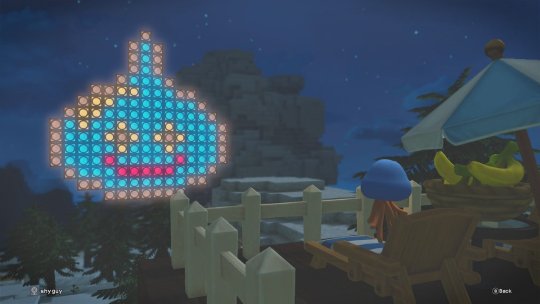
And thanks to DQB2, for the first time in 20 years I revisited my first creative endeavor: the underwater solitude bunker, this time no longer held back by the technology of the day, instead fully realized in digital form. Built as far down as the game would allow my character to dig, hidden beneath the still waters of a reservoir inside of a pyramid, it is truly a testament to mankind’s ingenuity. And it is wicked. Naturally I had my artist (and DQB2 fanatic) girlfriend visit my game’s world so she bask in my true brilliance. I gleefully guided her down to the catacombs and down the intimidatingly long chain that dangled into the deceptively still depths. After a brief swim into the murky unknown, we arrived at our hidden destination at the bottom of the earth, where she was greeted by the sight of my submerged masterpiece. A wry smile snaked itself around my lips, as I knew, was absolutely certain, that within seconds, once she had made it through the de-pressurization chamber at the entrance to my paradise, I would be hearing the words of someone simultaneously shocked, awed, and hopefully only a bit jealous. Instead, I was met with a few seconds of silence followed by a patronizing “Well, I’d have never thought to build something like this.”
So, I guess that’s why Builders 2 couldn’t quite reach the number one spot: true art is never appreciated in its time.
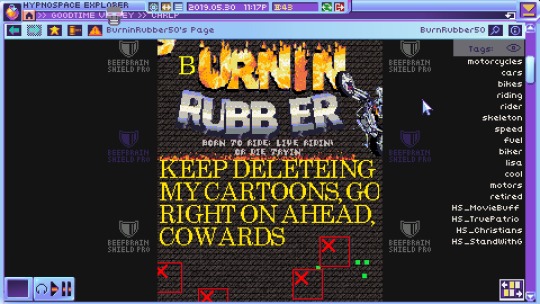
1. Hypnospace Outlaw (PC) - No piece of commercial art has ever felt like it was made for me in the way that Hypnospace Outlaw does. I grew up on the internet during the time period this game’s alternate reality take on the 90s internet is drawing its inspiration from; I have talked at length, to anyone who will listen, about how this early incarnation of the internet felt more like a physical space than it does now, and how much I miss the days of stumbling on to weird Geocities sites, meeting people in AOL chatrooms, and the early days of pirating. I met my first girlfriend through the internet, as well as my current one. The vast majority of the friends I’ve made in my life would not have happened without the internet, and not just because of distance; the internet allowed the younger me to be the person I was too insecure to be in person, and to develop my own voice. I owe who I am to the people I met in freeware fanmade Dragonball Z games and IRC chat rooms, and I think that’s kind of fucked up and magical, and it’s all kind of a miracle that I’m not even more of a mess of a person than I am today. And the developers of this game have clearly had those experiences, too.
I’m not going to sit here and tell you that Hypnospace Outlaw is for everyone, because it’s absolutely not. It’s essentially a detective game, but you’re solving cases by investigating user made internet pages circa 1997, and the “cases” you’re working on are largely things like bullying and copyright infringement. In other words, you’re mostly just reading gaudy websites and figuring out more about the back end and exploits of the Hypnospace experience. It is incredibly specific and niche and, as someone that sorely misses staying up until 3 AM downloading Winamp skins, I can’t stop thinking about this game, even months later.
I wrote a longer piece on the game on this very blog, and instead of rehashing anymore of it here, I’ll just direct you that way. Though if I may, I’d like to give one last endorsement for the game for any hypothetical person reading this that’s on the fence about trying it - if you’re the kind of person that somehow finds yourself reading this game of the year list, and have made it this far down the page without getting bored, I promise you that you’ll find something to love about Hypnospace Outlaw.
Honorable mentions (for games that were either not originally released in 2019 or I still wanted to briefly touch on):
Dragon Quest 11 S: Echoes of an Elusive Age - Definitive Edition (Switch) - Somewhere in between listing the original release of Dragon Quest 11 as my 7th favorite game of 2018 and now, it went from being “a really great JRPG” to “one of the best games I’ve ever played”, and in all honesty should have probably been at the top of last year’s list. A beautiful, unmatched experience all around.
Overcooked! 2 (Switch/PS4/Xbox One/PC) - The Overcooked games are possibly the best coop games I’ve ever played by merit of them actually requiring communication between players. Framing the game’s mechanics around cooking food, a universally understood act, is brilliant.
Baba is You (Switch/PC) - This is the most clever puzzle game I’ve ever played. Hell, it’s probably the most clever game I’ve ever played period. What prevented me from truly falling in love with it was that every single puzzle after the first couple of worlds became the hardest thing I’ve ever tried to do in my life. And while that did make solving those puzzles equally satisfying, the thought of dedicating multiple hours each to stumbling through dozens and dozens more of single screen puzzles was a bit more than I was able to handle. Still, for any puzzle fans, there are some genuinely jaw-dropping moments in this that shouldn’t be missed.
Kirby’s Dreamland 3 (Switch/SNES) - The things I didn’t like about DL3 as a single player game are exactly what makes it a great coop Kirby game, which was a way to play this game that I never had the pleasure of experiencing until this year when it was re-released on the SNES Switch app. It’s skyrocketed up my list of favorite Kirby games, as well as become my favorite SNES coop game. Also, Gooey.
Kind Words (lo fi chill beats to write to) (PC) - I don’t quite qualify this as a game, as it’s more of a message in a bottle app with a very warm and charming aesthetic. But if you’ve ever wanted to anonymously reach out to strangers and tell them things are going to be all right while listening to some calming music, this is the thing for you.
Luigi’s Mansion 3 (Switch) - I have a deep, deep fondness for all three of the Luigi’s Mansion games (the GameCube and the original game were my first launch day purchases!), and 3 is by far the best game in the series. Every single moment of it was some high degree of charming and/or cute, and it’s a game I would feel confident in recommending to just about everybody. However, while I truly loved my time with the game and will no doubt replay it years down the road, there was nothing inside of it that really left any kind of deep impression on me. It’s a summer blockbuster in a kid-friendly spooky form, and that’s great for what it is.
Super Mario Maker 2 (Switch) - Mario Maker 2, sequel to what I would consider to possibly be the best game Nintendo’s ever made, is by far and away my most disappointing game of the year. It’s still an amazing toolkit, and I’ve been very satisfied with the levels I ended up making. That said, the gaming landscape has changed a lot in the 5 years between the original and the sequel, and with Nintendo’s nigh complete silence regarding updates coming to the game, I can’t consider it to be anything but a massive disappointment. And maybe that will change! But as of this posting, there’s been almost nothing to keep me coming back to the game a mere few months into its life, and that’s a huge problem. All of that said, it’s still a fantastic game and value, especially if (like most) you didn’t get a chance to play the original due to the console it was stuck on.
1 note
·
View note
Photo

The best PS1 games of all time: From Symphony of the Night to Final Fantasy 7 http://bit.ly/2WiC9N8
Sony tentatively entered the video game market by partnering with Nintendo to develop a new, disc-based console in the mid-90s. After that partnership fell apart, Sony went on to release a console of its own.
The first PlayStation launched in Japan in late 1994, and in the following year, to the rest of the world. Although the PS1 wasn’t the first console to use CD-ROMs or provide true 3D graphics, it created the breakout moment for both of those technologies in gaming.
Ranging from novel-length, narrative-driven RPGs to fast and furious races to mind-bending puzzles, games for the original PlayStation offered a wildly diverse lineup over its 11-year production run.
Take a stroll down memory lane with us as we count down the 50 best PlayStation 1 games ever made. Do they hold a candle to the best PS4 games? You decide.
Action
Castlevania: Symphony of the Night

The Castlevania series was over a decade old by the time Symphony of the Night arrived, but it was absolutely the franchise’s defining moment. It radically expanded the series’ platforming with RPG loot and progression and non-linear exploration, lending its suffix to the subsequent “Metroidvania” genre as a result.
Unlike previous Castlevanias, where you controlled members of the vampire-hunting Belmont family, SotN revolves around Alucard, the lazily-named son of Dracula, who fights the horrible monsters of the castle to protect humanity from his father. Symphony of the Night stood out immediately for bold choices like hiding more than half of the game behind a false ending, or using the CD format to make a massive game filled with rich, 2D sprites instead of the crude, early 3D the rest of the industry was pursuing at the time.
One of the most influential action-RPGs of all time, Castlevania: Symphony of the Night is still just as satisfying to play now as it was 20 years ago.
Metal Gear Solid

Between Thief: The Dark Project on PC and Metal Gear Solid on PlayStation, 1998 was the year that modern stealth video games were born. A sequel to two lesser-known games from creator Hideo Kojima, you play as special ops soldier Solid Snake, infiltrating the hideout of a rogue unit threatening the United States with a nuclear strike.
Snake has a variety of tools for evading and taking out guards, making it one of the most taut and tactical gaming experiences available at the time. The series has since spawned four more critically-acclaimed main entries and various spinoffs, radically expanding upon both its deep gameplay and Kojima’s baroque, nuclear mythology. But the first Metal Gear Solid remains an unassailable classic.
Twisted Metal 2
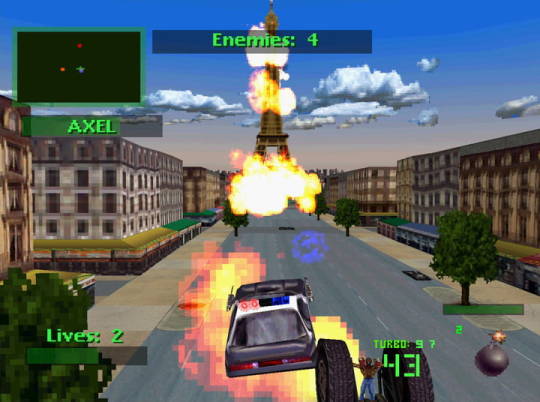
Prior to leading the team behind God of War, designer David Jaffe rose to prominence for his work on the PS1 vehicular combat series, Twisted Metal. In the demolition derby taken to a post-apocalyptic extreme, players take the wheel of various over-the-top armed and armored vehicles. Projectile weapons and power-ups are scattered throughout the arenas, set in the ruins of major cities around the world. The cars and drivers — like the series’ iconic ice cream truck, Sweet Tooth, and Axel, a muscle-bound man straddling two truck tires — ooze personality even in the early polygonal days of 3D.
The first game included only a single-player campaign and co-op mode, but the sequel expanded everything about it, including more vehicles, more arenas, and more custom and multiplayer modes for just dropping in and enjoying the mayhem à la carte. A contractual dispute between Sony and developer SingleTrac led to subsequent sequels being developed by other, less capable studios, making TM2 the peak of Twisted Metal for most fans.
Legacy of Kain: Soul Reaver

An action-focused spinoff of the top-down RPG series Legacy of Kain, Soul Reaver was a third-person action game from Crystal Dynamics, which would go on to earn acclaim with its reboot of Tomb Raider. You play as the ghostly vampire Raziel in the grimdark fantasy world of Nosgoth.
Players loved its dark, compelling narrative, voice acting, and varied mechanics. One of its main conceits was the ability to swap between the physical and spectral realm at any time. Crystal Dynamics was unable to simply layer two different versions of the world on top of one another because of the console’s limitations; achieving the effect was no small technical feat.
Legacy of Kain: Soul Reaver is also notable as one of the first major games written by Uncharted series scribe Amy Hennig, now considered among the best game narrative creators in the business.
Tenchu: The Stealth Assassins
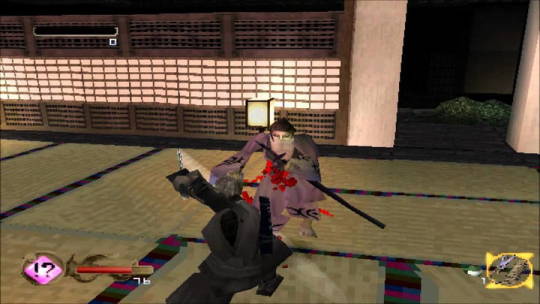
With their long-held mystique both within and beyond Japan, ninjas have featured prominently in video games since very early on. In franchises like Ninja Gaiden, however, they had largely been translated into nimble, hack-and-slash fighters. Tenchu: The Stealth Assassins is one of the first games to truly embrace the ninja as a stealthy infiltrator who must rely on his tools and wits to survive, rather than just weapons and reflexes. Developed by Japanese studio Acquire, Tenchu was the feudal Japanese parallel to Metal Gear Solid’s nuclear melodrama. Failing a mission would cause you to lose whatever tools they were carrying at the time, forcing you to be careful and deliberate when planning your approach to each mission. Fantastical elements from Japanese mythology provided fun flavor, but Tenchu was most fun because of how human and vulnerable you felt, making success all the sweeter.
Syphon Filter

Although somewhat overshadowed by Metal Gear Solid, Syphon Filter was another exceptional 3D, third-person action-stealth game for the platform that was praised at the time even if its legacy has not endured as strongly. Newbie developer Eidetic took equal inspiration from Goldeneye 007 on the Nintendo 64, hoping to create a “super-spy” hybrid genre with stealth, action, and puzzles.
It tells a gritty, contemporary story about special operatives facing off against biological terrorists in a world-spanning story that encompasses governments, multinational pharmaceutical companies, and conspiracies that run all the way up to the top. It was a pulpy and immersive plot, enhanced greatly by gameplay that was a compelling balance of stealth and straight-up action. Critics cued into its stellar AI, a key requirement for good stealth games, which was among the most impressive in any game to date.
Einhänder

Although best known at the time for its roleplaying games, Japanese developer Square was no one-trick pony. Case in point: It also gave us Einhänder, an absolutely fantastic side-scrolling shoot-’em-up in the tradition of Gradius (though not quite as extreme as the “bullet hell” subgenre that came after it).
Set in the future during a war between Earth and the Moon, you pilot a spacecraft through horizontal, 2.5D levels, destroying enemies and collecting power-ups. The name, a German word for a one-handed sword, alludes to the core mechanic of your ship’s sole grappling arm, used to pick up weapons scavenged from destroyed enemies. Weapons mostly have finite ammo, forcing the player to keep finding new ones and adapting their play style to what’s available.
Apart from the generally slick presentation, players loved the tactical variety enabled by the system of picking up new weapons, as well as the way that bosses had discrete parts that could be targeted and disabled. Although well outside of Square’s wheelhouse, many consider Einhänder to be one of the genre’s best, and Square’s finest non-RPG work to date.
Ace Combat 2

The original Ace Combat (released as Air Combat) was one of the first games released on the original PlayStation, and it showed. This sequel was an improvement by developer Namco in basically every way. Gameplay is divided into relatively linear, objective-based missions, with resources becoming available to upgrade your jets depending on how successful you were at destroying all targets.
It’s an arcade-style combat flight simulator, “arcade style” here referring to its gameplay-over-simulation design, with only semi-realistic physics and the ability to carry far more missiles than an actual jet could — though difficulty settings allowed more hardcore players to fly with greater realism if they so desired.
Mega Man Legends 2

Although the PlayStation hosted some of the best conventional 2D Mega Man games as well, it was also the exclusive home to some weird entries like Mega Man Legends, as well. With only the main character in common (and a cheeky reference to how he’s named after a character’s favorite video game), Legends is set in an archipelago where he travels around with the Caskett family of treasure hunters, scouring ruins for ancient machinery in search of the legendary Mother Lode.
In addition to refining the run and gun mechanics (replete with a fairly deep crafting and customization system), the second game also presented a much richer and more character-driven narrative than the structure typical to the core series of “hunt the bosses to get their powers.” The voice-acted cutscenes were particularly entertaining, feeling very much like watching an anime. It featured memorable characters like your nemesis, the pirate Tron Bonne, who had her own spin-off game between two Legends entries. A third game was canceled in development.
Tomb Raider 2

The original Tomb Raider essentially founded the genre of the 3D action/adventure game, but it’s the sequel that really made it sing. A radical departure from the cutesey, cartoon mascots of the previous console generation, international treasure hunter Lara Croft was immediately embraced as one of gaming’s most iconic characters, heralding the medium’s maturation.
The first game’s mix of exploration, platforming, combat, and puzzle-solving was expanded substantially for the sequel, with refined controls, bigger environments, and more exciting set-pieces. The third game felt a bit more like a rushed cash-in, leaving Tomb Raider 2 as the series’ peak for a lot of players until the universally-praised 2013 reboot.
Fighting
Bushido Blade
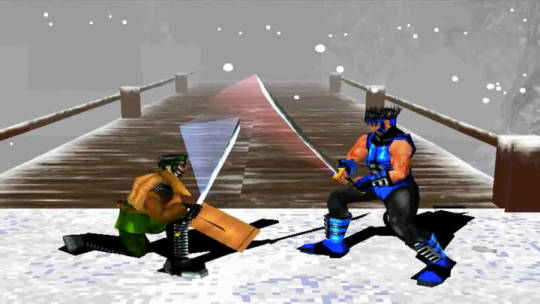
Feudal Japanese weapon-focused 3D fighting game Bushido Blade is the most well-known game from Japanese studio Light Weight, and it’s still somewhat anomalous within the genre. Eschewing the convention of health bars entirely, blows would either cripple particular body parts or kill you outright. This gave the game a rare degree of realism, and a much more tactical and punctuated tempo.
There were eight realistically simulated weapons and six characters with different stats, abilities, and proficiencies with each weapon, and a stance-based fighting system, giving players a lot of options. Also unlike the discrete levels of conventional fighters, its arenas were all inter-connected, and players could run and climb between them, using the environment to their advantage.
Bushido Blade had one direct sequel and another similar title on PS2, but those smoothed out some of its quirks too much for our taste. Other fighting games like the Soulcalibur series and more recently For Honor have explored weapons-focused “dueling,” but nothing has quite replicated what made the original Bushido Blade special.
Tekken 3

Street Fighter set the bar for 2D fighting games in the early 90s, but brawling in the third dimension was all about Tekken. This arcade-native franchise set the high bar for 3D fighters, perfecting the formula with the third entry. Where previous entries made relatively little use of the third dimension, depending on the character, Tekken 3 toned down the hyperbolic jumping and made it so every character could easily sidestep into the third dimension, opening up one of the most tactically complex and polished fighting systems in video games to date. A large and diverse roster of characters and truly impressive graphics for a home console port of an arcade game made Tekken 3 an instant classic, and it still holds the honor of being the second-best selling fighting game on any platform of all time, after only Super Smash Brothers Brawl.
Street Fighter Alpha 3

While Tekken and Bushido Blade blazed new paths for fighting games in the third dimension, Capcom stuck to its roots with Street Fighter, the fighting franchise that started it all. It featured a massive roster of 34 combatants drawn from the series’ whole history. It also introduced three different “isms” playstyles, changing the mechanics of how combos work and special moves charged up. While some felt that the 2D, sprite-based graphics dated the game, in retrospect it looks great, and holds up magnificently well as one of the most comprehensive and refined entries in the Street Fighter franchise.
Darkstalkers 3

Capcom was on such a roll producing top-notch fighting games during the ’90s that it sometimes overshadowed its own excellent titles. The Darkstalkers series of 2D fighters was always a cult and critical darling but had middling commercial success. Relatively standard (but solid) mechanically, it was mostly recognized for its anime-meets-gothic-horror aesthetic, with characters like vampires, mummies, demons, and a yeti. The look was magnificently refined by the time it hit the third game, with detailed and fluidly animated sprites that are among the best of the decade. First released in arcades, the game had undergone several character additions and balance changes by the time it was ported to PlayStation — all of which made it one of the fastest, fun, and charming fighters to play at home.
Platformers
Crash Bandicoot

Recently remastered in full, Naughty Dog’s original Crash Bandicoot trilogy (recently remade for PS4) endures as one of the most iconic 3D platforming series from the genre’s heyday. As the eponymous Crash, you are a mutant bandicoot (an Australian marsupial) on a quest to stop Dr. Neo Cortex from taking over the world with an army of other mutant animals.
The gameplay is standard for the genre — patrolling enemies, jumping challenges, power-ups, and collectibles, though levels were generally linear: It’s more Mario than Banjo-Kazooie. It was most highly praised at the time for its visuals, which felt more like a playable cartoon than any game to date. The vibrant character in Crash’s various death animations were particularly memorable in that regard.
Oddworld: Abe’s Exoddus

The original PlayStation was a fascinating, transitional period in game design, with a big uptick in processing power and storage opening up a whole new field of possible aesthetics to explore. Oddworld: Abe’s Oddysee was a cinematic platformer in the tradition of Prince of Persia or Another World. You play as Abe, an enslaved member of the Mudokon race, leading a rebellion against their corporate overlords before they are turned into a cheap food source.
It’s grim satire for sure, but full of warmth, humor, and loving attention to detail. As Abe explores, solves puzzles, and avoids enemies, he has to rely on his wits more than anything else, because he’s liable to die without much effort. The sequel, Abe’s Exoddus, picked up right after the first game and enhanced it with both quality of life improvements such as quick saving, and more elaborate puzzles based around communicating with NPCs. A recent, well-received remake of the original shows that there’s still a lot to be enjoyed in this classic series.
Rayman

Before designer Michel Ancel gave us Beyond Good & Evil (will the sequel ever appear?), he created one of the most enduring characters in platforming, Rayman. Released early in the PlayStation’s life cycle, Rayman was a stunningly colorful and charming 2D platformer, using the console’s 32-bit processor to present one of the most vibrant and detailed games to date. The story was light, fantastical nonsense, as the eponymous Rayman fought and jumped his way through various themed worlds to defeat bosses and save the day.
Rayman subsequently took a detour into 3D platforming as well, but his real legacy was secured in 2011’s Rayman Origins, which returned to the bright, animated aesthetic of the original. It didn’t rock any boats in terms of gameplay, but Rayman is still beloved as one of its generation’s most solid iterations on the platforming genre, which is still alive and well today.
Spyro 2: Ripto’s Rage

In the immediate wake of the Sonic vs. Mario console wars of the early-to-mid 90s, marketers still held onto the idea that a console needed a family-friendly platforming mascot to succeed. Next to Crash Bandicoot, the cutely-proportioned Spyro the Dragon competed for that spot on the original PlayStation.
En route to vacation, Spyro is pulled through a magical portal into a fantastical world under assault by a warlock who gleefully discovered there were no dragons to bother him. Spyro collects a series of MacGuffins to progress through nonlinear levels and unlock new traversal and combat abilities.
The whole first trilogy, developed by Insomniac Games, is well remembered for its colorful characters and solid platforming, but for our money, the second one hits the sweet spot of refined mechanics and freshness.
Klonoa: Door to Phantomile
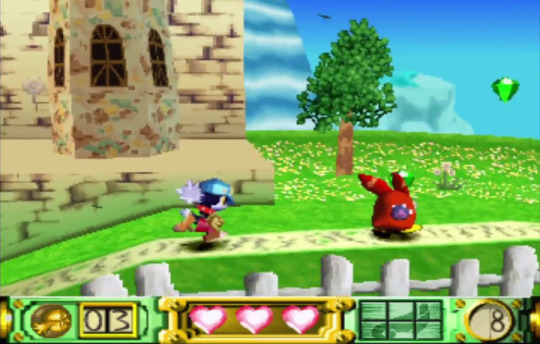
The transition from 2D to 3D gaming produced a lot of interesting artifacts, but oddly enough, most developers didn’t think to try the intermediary style that’s grown more popular in recent years: so-called “2.5D” (action rendered in 3D but largely constrained to a 2D plane). This Namco-developed platformer is set in Phantomile, a fantastical realm manifested from the dreams that people forget soon upon waking.
You play as Klonoa, an anthropomorphic resident of Phantomile with a power-granting wind spirit that inhabits a ring. Gameplay is standard for the genre, with enemies, puzzles, and bosses spread out across themed levels. Praised by critics at its release, Klonoa can be hard to find now, particularly outside of Japan, but is fondly remembered as a solid and enjoyable platformer.
Jumping Flash!

Released in 1995, one year before Super Mario 64, Jumping Flash! holds the honor (according to Guinness) of being the first truly 3D platforming video game. Presented in first-person, you play Robbit, a robotic rabbit, exploring open levels to collect four MacGuffins (“jump packs,” in this case) to progress through its six themed worlds, each with a culminating boss battle after three levels.
Robbit’s ability to triple-jump mid-air is the game’s mechanical focus, supplemented by various power-ups with classic effects like temporary invincibility, extending the level time limit, or increasing Robbit’s health. Although it was soon overshadowed by the flourishing of 3D platforming’s imminent golden age, Jumping Flash! is still an innovative and under-appreciated trailblazer.
Ape Escape

In this third-person platformer you play a boy, Spike, tasked with travelling through time and using a variety of gadgets to capture hyper-intelligent apes that are meddling with history. It was the first game to require the PlayStation’s DualShock controller before the now-standard vibrating two-stick model came stock with the console. Rather than using the right stick to control the camera, it was used to manipulate the gadgets. Acclaimed at the time and fondly remembered since, it’s a seminal moment in platforming video games for both its cutting edge presentation and mechanics.
Puzzle
I.Q.: Intelligent Qube

The PlayStation’s most memorable games tended to be immersive fantasies, yet there were a few exceptions more purely focused on gameplay. I.Q.: Intelligent Qube was a 3D puzzle game in which a player ran around on a gridded platform, clearing cubes before they push him off into the void. It was a challenging brain-tickler, given more replayability with the ability to create new levels, a feature that unlocks after completing the game once. Although released in the West, it was most successful in its native Japan, garnering several sequels.
Super Puzzle Fighter II Turbo
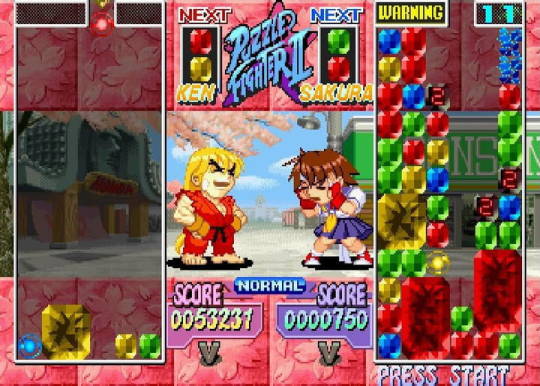
This port of a hit Japanese arcade puzzle game for one or two players isn’t actually a sequel to anything, but is cheekily named after Super Street Fighter II Turbo because it bolts the aesthetic and interface elements of Capcom 2D fighters onto a falling block puzzle. In it, Chibi versions of Street Fighter and Darksiders characters performed a silly battle that reflected what was happening in the puzzles.
Capcom developed the game for Japanese arcades in response to the popularity of Sega’s Puyo Puyo 2. It employed similar competitive mechanics to Puyo of successful chains dumping garbage blocks onto the opponent’s field, which could be countered with a quick combo in response. The charming 2D graphics and solid competitive puzzling mechanics have aged beautifully, maintaining this game’s reputation as a delightful cross-genre curio.
Racing
Gran Turismo 2
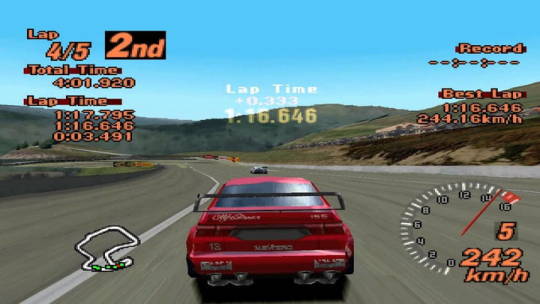
Hyper-realistic driving sims are flourishing, but Gran Turismo was the cream of the crop for virtual gearheads in the PS1 era. The smooth forms and inorganic materials of cars have always been an excellent test case for the cutting edge of realistic graphics, and as such Gran Turismo 2 was one of the first games where you might glance at the screen and think you’re watching live television.
The gameplay, graphics, and physics were largely unchanged from the first game, with the most notable expansion being in Gran Turismo 2’s enormous roster of real-world cars (over 600, the largest in any game to date), a robust customization system, and more flexibility to take part in races à la carte, rather than necessarily structured as tournaments. It was a bestseller among both car fans and regular gamers, establishing Gran Turismo as a key racing franchise that has endured through the present.
Wipeout XL

Like F-Zero on the SNES, the Wipeout series let players experience fantastical levels of speed in futuristic racing. Players piloted extremely fast, anti-gravity ships through dramatic, high-tech courses. Gameplay revolved around extremely high speeds, power-ups, and utilizing air brakes for drifting turns around tight corners.
Expanding and improving upon the first game in nearly every way, Wipeout XL was praised for its intense gameplay and slick presentation, including a techno music soundtrack and detailed background worldbuilding that made it feel like the immersive, futuristic entertainment video games had promised to become since the 80s.
Crash Team Racing

Mario Kart clones flourished on all consoles in the years following the success of Mario Kart 64, and Crash Team Racing was handily the best available on the PlayStation. Developed by Naughty Dog, it featured characters from the Crash Bandicoot trilogy kart racing for up to four players. Like its obvious inspiration, it featured aggressive and speed-boosting power-ups, drift turning, and whimsical, elaborate courses.
Unlike Mario Kart games, in addition to standard, time trial, and battle modes, it also included a story that progressively unlocked additional characters and modes as players completed it. For the most part, it didn’t shake up the formula in any substantial ways, but it was a solidly designed, good looking, and fun game that filled a definite niche for PlayStation owners. Not every great game needs to reinvent the wheel, after all.
R4: Ridge Racer Type 4

Between the simulation-focused realism of Gran Turismo and the wacky hijinks of Kart racers, you have Ridge Racer. R4, the Namco-developed series’ final entry on PlayStation, looks like the former, but plays closer to the latter. That made it perfect for racing fans who wanted the fantasy of realistic-looking cars but were turned off by realistic handling. 321 vehicles to unlock and a variety of tracks and modes make this a great package for anyone who wanted a rich, arcade-style racing experience. Many still consider it the peak of the Ridge Racer series.
Driver: You are the Wheelman
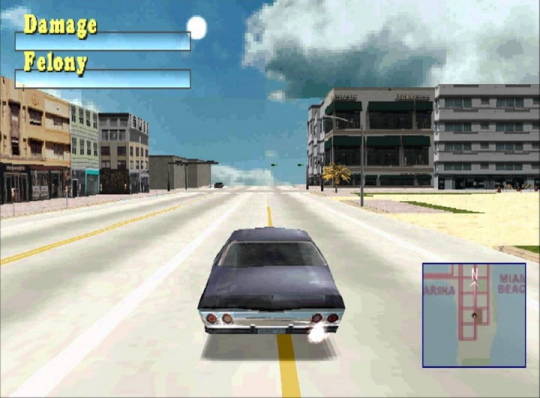
While most driving games framed the action around races, Driver instead sought to recreate the feeling of 60s and 70s car chase movies like Bullitt or 1978’s Driver. Set in open-world urban environments inspired by real cities, Driver looked forward to the sort of hijinks that would come to define Grand Theft Auto games, like escaping from cops or smashing up other cars. It also included an interesting Film Director mode that allowed players to capture replays with particular camera angles.
Rhythm
PaRappa the Rapper
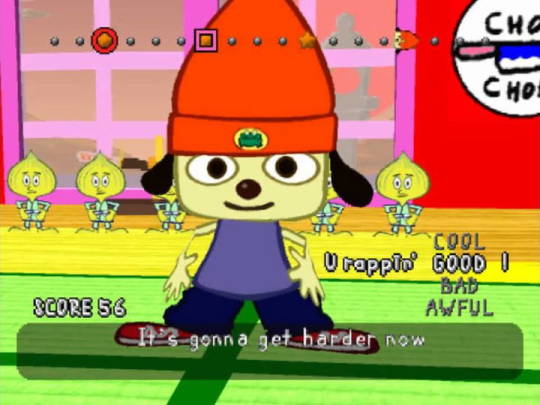
Before Harmonix made the genre blow up with Guitar Hero on the PlayStation 2, PaRappa the Rapper was the name in rhythm games. Sidestepping the crude stabs at realism that contemporary developers were making with the console’s nascent 3D tech, PaRappa features colorful, 2D characters in 3D environments. This highlighted design over horsepower, decades ahead of current trends to integrate 2D and 3D artwork into more visually interesting aesthetics than the brown-grey realism that dominated the early part of the millennium.
PaRappa’s bright and cheery look was a 90s hip-hop Day-Glo fantasia, and the music, while lyrically inane, holds up shockingly well over 20 years later. PaRappa the Rapper has been technically surpassed by subsequent rhythm games in nearly every regard, but it’s still rightly beloved as a groundbreaking curio from a time in gaming before genres became quite so crystallized and anything felt possible.
Vib-Ribbon
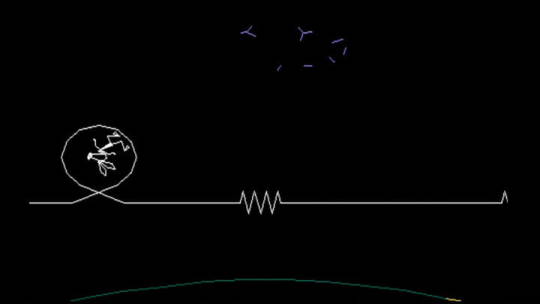
Although Vib-Ribbon is one of the most visually primitive games ever released for the original PlayStation, ironically it could now most easily be mistaken for a contemporary indie title. In this minimalist rhythm platformer, you play Vibri, a rabbit who must traverse courses generated procedurally from the music, all rendered in simple, white, line vector graphics on a black background.
The game’s lightweight visuals meant that it could be loaded entirely into the console’s RAM, and thus players could generate levels based on any music CDs they put in. Using CDs to generate material for games had been explored on PlayStation already in Monster Rancher, but Vib-Ribbon was the first to integrate the content itself into the game. Well ahead of the curve for both rhythm games and minimalist, procedural platformers, Vib-Ribbon feels nearly timeless now.
Role-playing
Final Fantasy IX

Breaking off from the trajectory of Final Fantasy VII and VIII toward gritty sci-fi, FF9’s return to the stylized, chibi aesthetic and light-hearted fantasy of the series’ original entries left many fans turned off. In retrospect, it stands out as a fantastic synthesis of the franchise’s recent ideas with its classic mechanical and worldbuilding tropes. It follows the rogueish Zidane, the rebellious princess Garnett, and their assembled friends taking on the sinister Queen Brahne and her world domination plans. It’s classic Final Fantasy through and through, and is easily the most charming and fun entry from the era.
Final Fantasy VII

Perhaps the most famous entry of the premier Japanese RPG franchise, FF7 was a massive, breakout event for the series, breaking into the third dimension and reaching far wider audiences than ever before. It tells the tale of mercenary Cloud Strife and his ragtag friends taking on the sinister Shinra Corporation, which is literally draining the planet’s life force. The chunky, polygonal visuals haven’t aged well, but characters like Sephiroth and moments like the death of Aeris loom large for gamers (as evidenced by the hugely hyped remake in the works), making this still one of the most influential and well regarded RPGs of all time.
Chrono Cross

Squaresoft RPG Chrono Trigger is still widely considered one of the greatest video games of all time. Its PlayStation sequel never achieved the same reputation, but it’s nevertheless a fun and interesting game that holds up quite well. Like the first game’s different time periods, Chrono Cross’ primary narrative conceit was jumping back and forth between two parallel timelines, in one of which the protagonist had died as a child.
The game features over 50 recruitable characters, each with their own personal quest to follow, making it literally impossible to see everything in a single playthrough. The connections to the first game are non-obvious at first, but ultimately it ties them all together in an interesting and resonant tale that frequently meditates on loss and regret. It’s also colorful, fun, and features unique approaches to both combat and progression.
Xenogears

Another fiercely loved Squaresoft RPG, Xenogears started as a pitch for Final Fantasy VII, but eventually spun off to start its own science fiction franchise. Long and ambitious, it amazed some and perplexed others with the plot’s complicated political and religious themes, along with a healthy dollop of Jungian psychoanalysis.
You play as the amnesiac young man Fei Fong Wong in a quest to save the world from Deus, an ancient, planet-killing weapon that has gained sentience. Gameplay featured both conventional, Final Fantasy style active time battles, as well as fights in the eponymous Gears (giant mecha suits) that involved managing action points and developing combos. The first Squaresoft RPG to feature voice acting and anime cutscenes, Xenogears was a leap forward in the medium’s potential for mature and cinematic storytelling.
Vagrant Story

Yasumi Matsuno’s action RPG stood out from its peers at Square because of its razor focus. Rather than assembling a ragtag crew of wacky misfits to save the world, you play a single character, Ashley Riot, a knight sent after a cult leader who kidnapped a noble family and absconded to a ruined medieval city, Leá Monde.
Like Parasite Eve, it featured pausable, real-time combat and the ability to target and be targeted on particular body parts, crippling particular capabilities. Combined with an elaborate weapon crafting and armor system, it provided a rich and focused tactical playground that players enjoyed experimenting with for years. It was essentially retconned into Ivalice, the world of Final Fantasy Tactics and XII, but even without that it would stand alone as a beloved classic for its mature story and mechanical depth.
Final Fantasy VIII

Following the explosive, global success of FFVII was a tall order, but Square managed to keep aggressively evolving the series for its immediate sequel. Final Fantasy VIII was the first in the series to feature realistically proportioned characters and continued the move from 7 towards the fantasy-infused sci-fi aesthetics that defined later entries.
The story revolved around Squall Leonhart and a party of other freshly-trained SeeD mercenaries in a quest that quickly turns from political to world-ending stakes. Fans also latched onto the romance between Squall and fellow party member Rinoa, which featured an original vocal track (a series first), “Eyes on Me” by Chinese singer Faye Wong.
The game was a radical departure mechanically, getting rid of magic points in favor of the elaborate “Junction” system of drawing finite quantities of spells from enemies that you could either cast or hold onto in order to buff up particular stats. It was an odd system that didn’t make it into subsequent entries, but demonstrated the franchise’s ongoing willingness to reinvent itself in core ways.
Suidoken II

While widely beloved by fans and critics, Suidoken II’s limited print run and distribution prevented it from reaching the universal acclaim that Final Fantasy games found on the PlayStation, at least in the West. Loosely based on the plot of a classical Chinese novel, it was most praised for its story: a complex and mature political saga of warring nations and city-states struggling for independence.
The scope of that narrative was reflected in the scope of the party you could recruit, with over 100 characters able to join you through personal side quests (though not all in combat roles). It featured both standard turn-based party battles in the vein of Final Fantasy as well as large-scale, strategic engagements on a grid more reminiscent of Fire Emblem. Suidoken II was about as epic as you could get on the PlayStation.
Legend of Mana
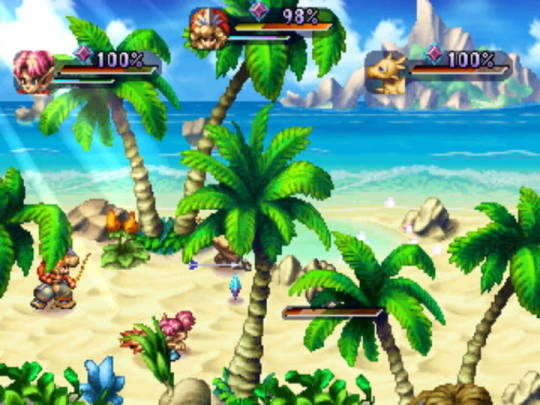
The Secret of Mana series grew up alongside Final Fantasy in the 8- and 16-bit eras (the first game was actually sold in the United States as Final Fantasy Adventure), generally taking a slightly lighter tone and substituting the turn-based battles with more open, action RPG gameplay. Legend of Mana is the fourth entry (following the fantastic Seiken Densestsu 3 for SNES, which has still not been officially localized in the west).
A recurring theme on this list, the storage and processing power of the PlayStation was leveraged not to make crude stabs at 3D graphics but to fill it to the brim with lush, beautiful 2D graphics, universally praised at the time as looking like an animated film, and aging exceptionally well.
Set after a cataclysmic war, the player is tasked with restoring the land of Fa’Diel (and eventually the Tree of Mana itself) by literally placing parts of the land on the map that have been sealed in artifacts, with their relative placement affecting things like the strength of elemental magic types in each region. It was criticized at the time for making the story feel too diffuse, but in retrospect, its nonlinear, system-rich approach feels ahead of its time.
Wild Arms
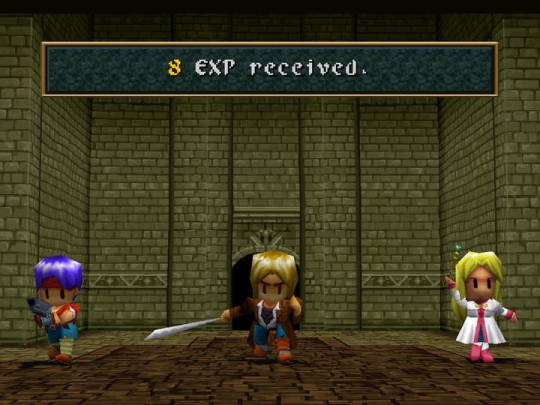
One of the first RPGs released for the PlayStation, Wild Arms stands apart also for its highly-unconventional setting that blends traditional JRPG fantasy tropes with visual elements from the American old west. Set in the world of Filgaia, you play a scrappy band of wandering adventurers called Dream Chasers, including a boy, Rudy, who can excavate and use ARMS (Ancient Relic Machines — basically guns from a lost era of greater technology).
Using both 2D sprites for exploration, and 3D rendered battle sequences, Wild Arms was an interesting transitional game between the 16- and 32-bit eras. Mostly it stands out for its compelling setting, however, fusing science and magic in a way reminiscent of — but also completely distinct from — Final Fantasy VI.
The Legend of Dragoon

Sony may have set unreasonable expectations for The Legend of Dragoon by marketing it initially as a “Final Fantasy Killer,” but this SCE-developed RPG has endured as a cult classic of the era. You play as Dart, an orphaned survivor of a destroyed city rescuing his childhood friend, kidnapped by a rebel army.
In typical genre fashion, he assembles a motley crew for a quest that spirals up to defeating a world-ending god of destruction. It fleshed out the typical turn-based combat with a system of combos and counter-attacks that added an interesting dimension of timing and risk/reward. While it never panned out into a franchise, it’s just as well-written and designed as many of its more widely beloved peers.
Legend of Legaia
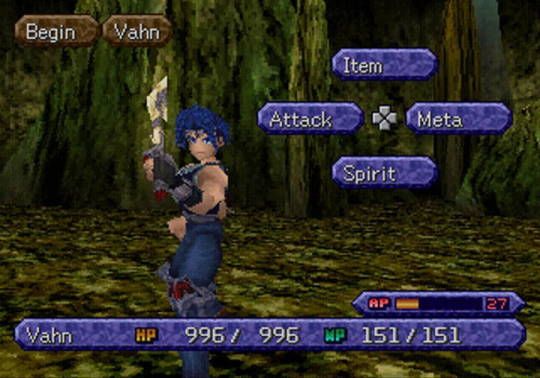
While much of the flourishing RPG genre was simply following in Final Fantasy’s footsteps, Legend of Legaia had the hipster appeal of trying to do something different. The story was standard genre fare: A martial artist from a village at the edge of the world, you set out on a quest to beat back the Mist that has consumed the surface and spawned countless monsters, pushing humanity to the brink.
Legaia stood out for its combat system, which was turn-based but also heavily derived from fighting games. Rather than having a generic “fight” option in battles, players targeted different strikes as left, right, high, or low, chaining them together into increasingly elaborate combos as the game proceeded. It added a tactical richness to combat that few of its peers could match, and is a franchise worth re-examining.
Parasite Eve

Adapted from a popular, contemporary Japanese novel of the same name, Parasite Eve was a bit of a genre hybrid from developer Square. Equal parts action RPG and survival horror, it follows a New York City cop trying to stop an entity named Eve from destroying humanity through spontaneous combustion.
Like Square’s Vandal Hearts, it featured pausable real-time battles and the ability to target particular body parts, with abilities tied to the “Active Time Bar” (ATB) system pioneered in the studio’s Final Fantasy games. Critics praised its interesting and immersive design at the time, although its legacy was somewhat overshadowed by the more “pure” RPGs and survival horror games of the time, respectively. In retrospect, however, its infusion of RPG progression systems into a survival horror framework can be seen reflected in more modern games such as The Evil Within, although its pausable real-time combat has been less explored subsequently.
Shooters
Medal of Honor

Several years before the original Call of Duty kicked off the oversaturation of WW2 first-person shooters in earnest, Medal of Honor set the bar. Steven Spielberg developed the story, working with the same historical military consultants he collaborated with on Saving Private Ryan.
Where previous shooters had been relatively light-hearted affairs about blasting hordes of demons, Medal of Honor was one of the first serious, cinematic shooters that presaged future classics like Spec Ops: The Line by exploring the medium’s serious narrative potential. Critics and fans also praised its gameplay, however, as one of the most generally refined shooters released to date.
Sports
Tony Hawk Pro Skater 2

The original Tony Hawk Pro Skater was an enormous success when it launched in 1999, but it was the follow-up from the next year that truly cemented it as one of the most beloved sports franchises of all time. The action centered around arcade-style gameplay, with the player flipping and grinding over open levels to rack up as many points as possible from tricks and combos within two minutes.
Collectibles and level-specific objectives keep it spicy, and the addition of level- and skater-creation tools gave it a ton of replayability. The series continued through the ill-received Tony Hawk Pro Skater 5 in 2015, but for many, the second remains the definitive entry and still one of the most highly rated sports games of all time.
Madden NFL 98
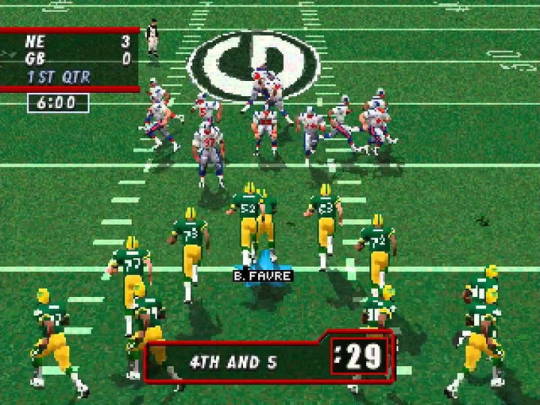
1997 saw the Madden football franchise’s first stab at 3D with Madden Football 64, but for our money, the best sports game of the year was the less ambitious and far more refined Madden NFL 98. While other franchises made the leap to polygons, development efforts at Madden instead were focused between 97 and 98 on punching up the game’s artificial intelligence, which made this the most strategically sophisticated football game ever released at the time. As is often the case from this era of consoles, Madden NFL 98’s late 2D sprite graphics hold up better than the early efforts at 3D that followed it.
Strategy
Final Fantasy Tactics

FFT wasn’t the first tactical RPG to come out of Japan — the Shining Force and Ogre Battle series already broke that ground for western console audiences. It’s far and away the most beloved and influential one, however.
The series’ traditional linear battles of three to four party members lined up facing a few enemies. In turn, Final Fantasy Tactics opened up into a much richer, isometric, grid-based combat reminiscent of X-COM, with an elaborate job system allowing for deep, strategic party customization.
Set in the world of Ivalice (which was featured in later entries like FF12), it tells a mature tale of competing noble families, warring nations, and the intersection of church and state. Spin-off sequels for the Game Boy Advance were solid, but none ever quite captured the magic of the original.
Survival horror
Resident Evil 2

While the first Resident Evil is beloved for creating “Survival Horror,” Resident Evil 2 perfected the formula. It picks up two months after the events of the original, as the Umbrella Corporation’s zombie plague spreads from the company’s labs to nearby Raccoon City. Like the first game, it features two protagonists, puzzles, exploration, and limited resources for ammo and saving the game, forcing careful and strategic play.
It added the “Zapping System,” in which players could revisit scenarios multiple times as different characters, with unique challenges designed for each of them. Its presentation was also praised as improving upon the first game in virtually every way. Though the series has continued for decades — we’re up to Resident Evil 7 as of 2017 — many still consider the second the high watermark. Resident Evil 2 also received a stellar remake in 2019.
Silent Hill

The PlayStation’s 3D capabilities opened up a whole field of possibility for cinematic horror, which is why the survival horror genre was born on it. Where the early Resident Evil games relied more on jump scares and zombie movie tropes, Silent Hill took a decidedly more psychological and surreal approach.
You play as Harry Mason, searching for his daughter who goes missing in the creepy town of Silent Hill while passing through on vacation. The whole town was blanketed in a thick fog, cleverly utilized to cover for the system’s draw distance limitations, which gave the game a memorably menacing atmosphere, particularly when played alone and late at night.
Drawing from an interesting range of influences like Lewis Carroll and David Lynch, Silent Hill is seminal in establishing the subtler and more artistically interesting strain of psychological horror in video games.
Resident Evil

Released first in Japan as Biohazard, Resident Evil is Shinji Mikami’s genre-defining survival horror opus. Although not the first horror game, it exerted such a gravitational pull that, like shooters in the wake of Doom, any other entries in the genre were called an imitation for a while — and it’s still basically impossible to talk about survival horror without Resident Evil featuring prominently in the discussion.
You play as Chris Redfield and Jill Valentine, special forces units sent to investigate their missing teammates in a zombie-infested mansion on the outskirts of Raccoon City. It established the now-standard genre gameplay of careful exploration, puzzle solving, and resource management. Players remember it most fondly for its creepy atmosphere and unsettling presentation, however, making clever and efficient use of the hardware with 3D characters on pre-rendered backgrounds to achieve unprecedented immersion.
Dino Crisis

If you liked the survival horror stylings of Resident Evil auteur Shinji Mikami, but weren’t into zombies, Capcom still had you covered. Much of the same team including Mikami himself also developed Dino Crisis, a survival horror game set on a secret island research facility wherein genetically-revived dinosaurs run rampant, Jurassic Park-style. Capcom contrasted it with Resident Evil by marketing it as “Panic Horror” rather than survival, because of the emphasis on dinosaurs as a quicker and more aggressive/intelligent threat than zombies.
Unlike the pre-rendered backgrounds of its predecessors, Dino Crisis featured real-time 3D environments, adding to the sense of immersion. Although not quite as viscerally scary or enduring a franchise as Resident Evil, many felt that it improved upon those games in nearly every way, offering a tense, fun, and more consistently paced experience.
The best Xbox 360 games
The best NES games of all time
Collected ’em all? Here are 10 collection-based RPGs Pokémon fans should try
0 notes
Text
The 50 most anticipated video games of 2018
New Post has been published on https://takenews.net/the-50-most-anticipated-video-games-of-2018/
The 50 most anticipated video games of 2018
In relation to video games, this previous yr goes to be a tough act to observe. However 2018 is skipping onto the stage with a flourish of promising titles.
Huge sequels like The Final of Us Half 2 and Pink Useless Redemption 2 are prone to seem. Extremely artistic oddities like The place the Water Tastes Like Wine and Wattam are shifting up for launch. Multiplayer video games like Anthem, Crackdown three and Sea of Thieves need to change the way in which we play collectively.
This listing was put collectively by the entire Polygon workforce and is, after all, subjective. Tell us, in feedback, which video games you’re most trying ahead to in 2018.
PlayStation four, Home windows PC, Xbox One
Set in a lush, alien world, BioWare’s open-world monster shooter embraces loot drops, as gamers search to improve exosuits and weapons. With the sport focused for launch within the fall, there’ll be a heavy emphasis on in-game occasions and shared-world, squad-based challenges.
Nintendo Swap, PlayStation four, Home windows PC, Xbox One
Koei Tecmo’s fight sport is predicated on the second season of the anime sequence, wherein human-eating giants assault fortified cities. Based on the sport’s builders, this sequel to the 2016 authentic will function extra story and extra choices for gamers who like their enemies to be tremendous robust. It’s set to reach in March.
PlayStation four, Home windows PC, Xbox One
Created by Hazelight Studios, led by the person behind the excellent Brothers: A Story of Two Sons, this two-player co-op sport is about two males attempting to interrupt out of jail. It’s set within the early 1970s and makes use of a wide range of gameplay set-ups, reminiscent of capturing, driving, crawling and fixing different bodily issues. It’s out on March 23.
PC
The unique BattleTech’s creator, Jordan Weisman, is heading up the workforce behind this newest tackle mech fight. It’s a turn-based technique sport, which attracted greater than $2.7 million on Kickstarter. Gamers assemble a workforce of mechs, and prepare up sufficient pilots to create a cohesive combating power.
PlayStation four
Introduced at Paris Video games Week, this beautiful sport comes from the makers of Entwined. It’s a few teenage artist who explores his gloomy hometown, utilizing a magic quill to create residing artwork in an effort to defeat a gang of bullies.
Home windows PC, Xbox One
Initially scheduled for launch in 2016, this oft-delayed open world sport is all about mayhem and destruction in metropolis environments. If you happen to like to interrupt skyscrapers, that is in all probability for you, particularly in multiplayer environments the place destruction is extra free-flowing than within the marketing campaign.
PlayStation four, Home windows PC, Xbox One
A sequel to Ubisoft’s open-world auto-racer from 2014, this isn’t nearly racing vehicles. Just about something with an engine is on supply, together with airplanes, grime bikes, boats and excessive efficiency sports activities vehicles on closed tracks. The open-world avenue racing of the unique can also be included.
PlayStation four, Home windows PC, Xbox One
On this third-person platform hack-n-slash, gamers tackle the function of Fury, an “unpredictable and enigmatic” member of the 4 Horsemen. Fury wields a magical bladed whip, whereas she explores colourful, post-apocalyptic environments, fixing development puzzles alongside the way in which.
PlayStation four
This choose-you-own-narrative sport is a stacked matrix of potential outcomes, based mostly on a world wherein androids serve humanity. Created by David Cage (developer of Heavy Rain and Past: Two Souls), it is a story that tries to place the participant within the function of storyteller.
PlayStation four, Home windows PC, Xbox One
Arriving on Jan. 26, Dragon Ball FighterZ is a 2.5D fighter from Arc System Works. It duties gamers with forming a workforce of fighters, based mostly on characters from the Dragon Ball anime sequence, and controlling one in every of them in flip. Combo sequences yield particular upgrades, reminiscent of well being regeneration.
PlayStation four
From the makers of LittleBigPlanet, this beautiful world stars somewhat imp who travels by impressionist landscapes, fixing puzzles through merchandise assortment, bodily skills and possession of different characters. The sport’s marketing campaign is designed to encourage sharing of player-created sport worlds, whereas the actual meat appears to lie in these creation instruments.
PlayStation four, Home windows PC, Xbox One
Developer Iron Galaxy is greatest recognized for combating video games like Killer Intuition and Divekick. However Extinction is all about battling 150-foot ogres as they stomp and destroy numerous places, together with cities and forests. The participant should additionally save quaking people from the incoming menace, so there’s loads of exploration and route-finding. It’s out on March 31.
PlayStation four, Home windows PC, Xbox One
The most recent set up in Ubisoft’s open world fight sequence takes place in rural Montana, the place a demagogue is controlling the native inhabitants. Gamers device up with weapons, devices and automobiles to take down enemy outposts utilizing stealth, smarts and brute violence. It’s out on March 27.
Nintendo Swap, PlayStation four, Home windows PC, Xbox One
Developed by Swedish outfit Zoink, Fe is a symbolic private fantasy that brings to thoughts highly effective video games like Journey and Shadow of the Colossus. It stars a fox-like creature who seeks to guard the forest by enlisting animal allies by audible calls.
PC, PlayStation four
Two mates discover surreal islands, manipulating time to unravel puzzles. Every island is plagued by giant-sized variations of on a regular basis objects: online game consoles, walkie-talkies, recycling bins, soda bottles, Jenga blocks and extra. It’s being developed by The Voxel Brokers.
PlayStation four
On this rebirth of a much-favored PlayStation franchise, huge brawler Kratos has developed right into a doting dad. This doesn’t imply he goes all gentle on the giants and monsters he fights. It simply means his child comes alongside for the trip. Developed with sturdy action-RPG overtones by Sony’s Santa Monica studio, it’s scheduled to reach within the subsequent few months.
PlayStation four, Home windows PC, Xbox One
Frontier Developments’ dinosaur park administration sim lets gamers run their very own Jurassic Park, bio-engineering new dinosaur breeds whereas constructing points of interest, containment amenities and analysis labs. It’ll seemingly launch in the summertime, across the time the film, Jurassic World: Fallen Kingdom, hits theaters.
PlayStation four, Xbox One
Celebrating its umpteenth look in ‘video games to look at this yr’ tales, Tetsuya Nomura’s journey options characters from Disney and Pixar in a grand and colourful journey involving leaping, capturing, casting magic and combating towards enemies, huge and small.
Nintendo Swap
On this first new Kirby sport for Swap, our rotund hero is joined by as much as three teammates in a sideways-view platform sport. In trailers launched by Nintendo, Kirby is seen combining skills to create assaults with all the occasion, whereas utilizing teamwork to unravel puzzles.
Home windows PC, PlayStation four
The primary launch from new outfit Foam Sword Video games carries excessive expectations. It’s being created by workforce members with a historical past at Media Molecule, and the sport’s vivid artwork model reveals these roots. It’s a puzzle journey set in a childhood world harking back to The Goonies.
PlayStation four
Set 5 years after the unique, this post-apocalyptic fight journey is performed by Ellie, a personality who was initially a sidekick. With anticipation for this title so excessive, developer Naughty Canine hasn’t revealed a lot concerning the sport, however we are able to anticipate it to be handsome and intensely violent.
PlayStation four, Home windows PC
Former Steel Gear character designer Yoji Shinkawa is concerned on this Sq. Enix shooter. Judging from the restricted gameplay we’ve seen in trailers, Konami’s sequence is a particular affect. With the sport set within the Entrance Mission universe, there’s a touch of stealth motion as gamers attempt to take down big mechs.
Home windows PC
This single-player and cooperative multiplayer card sport is a digital launch based mostly on the profitable Lord of the Rings: The Card Sport. It’s going for the market dominated by the likes of Hearthstone, though card-packs aren’t random, as a substitute being based mostly on recognized mixtures.
Home windows PC
MechWarrior 5: Mercenaries, introduced at MechCon a yr in the past, would be the first MechWarrior sport with a single-player marketing campaign in additional than 15 years. It’s being developed by Piranha Video games, greatest recognized for MechWarrior On-line. Gamers take management of big mechs in first-person capturing matches, with four-player co-op supported.
Nintendo Swap, PlayStation four, Home windows PC, Xbox One
Capcom’s newest addition to the long-running sequence is a side-scrolling motion platformer within the vein of the earlier Mega Man video games, however with 3D visuals. Engaged on the title are producer Kazuhiro Tsuchiya and director Koji Oda, each veterans of Capcom and the Mega Man sequence.
PlayStation four, Home windows PC, Xbox One
This survival spinoff of Steel Gear Stable 5: Floor Zeroes is the primary Steel Gear sport to be launched for the reason that fraught divorce between Konami and Hideo Kojima. It takes place in an alternate actuality, the place members of Large Boss’ Militaires Sans Frontières have been transported off-world through wormhole. The planet on which the troopers now discover themselves is infested with crystalline zombie-like creatures.
PlayStation four, Home windows PC, Xbox One
Beginning in a grim wasteland model of Moscow, inhabited by mutants, this sharp-looking shooter picks up the place Metro: Final Gentle ended. Gamers will ultimately depart Moscow and discover new areas providing unfamiliar settings. Pleasant faces from earlier entries within the sequence additionally reappear.
PC
An indie sport from Meowza Video games, this Animal Crossing-like journey is bursting with cuteness. Gamers inhabit a land of cats, as they go about managing a market stall: exploring, crafting and gathering assets.
PlayStation four, Home windows PC, Xbox One
We had a hands-on session with Capcom’s sport earlier this yr, in addition to an extended play session, and got here away deeply impressed. Monster Hunter: World follows the sequence’ tracking-and-hunting system, however with helpful additions to weapons and crafting in addition to seamless maps. It’s out on consoles on Jan. 26, with the PC model coming later.
PlayStation four
An up to date and expanded fight system may make this story-based RPG interesting to gamers who discovered the unique heavy going. However the core worth of Studio Ghibli-like animation and tone continues to be there. Developed by Stage-5, this sport is the story of a boy king who groups up with allies to reclaim his throne.
PlayStation four, Xbox One
Rockstar’s Western-themed motion sport will seemingly be one of many yr’s highest grossing hits. It’s a prequel to the 2010 launch. Gamers tackle the function of an outlaw as he ranges round an open world, elevating hell on horseback.
PC
Created by Lucas Pope, maker of Papers, Please, this startlingly monochrome thriller sport is ready aboard an deserted 19th century ship. The participant takes on the function of an insurance coverage adjuster who explores the vessel to seek out out the destiny of its crew.
PlayStation four, Home windows PC, Xbox One
This technique world-building sport spans the historical past of steam locomotives in america, starting across the 1830s and lasting for one more 100 years, till the approaching of diesel engines. It’s out on Jan. 26.
Home windows PC, Xbox One
Uncommon’s squad-based journey takes place on the excessive seas, the place gamers cooperate as pirates: steering, capturing, pillaging and looting. It’s an formidable undertaking, to make certain, however we’ve had enjoyable taking part in the sport at any time when it’s been on present. It’s out on March 20.
Unconfirmed title
The title of this sport has but to be confirmed, although teasers and leaks make a convincing case that Lara Croft’s subsequent journey makes use of the phrase “shadow” in its title. Introduced late within the yr, this sport is promised to be launched comparatively quickly. Sq. Enix says it needs a shorter ready interval between first introduction and arrival. The final Tomb Raider sport was launched two years after it was first introduced. A brand new Tomb Raider film can also be popping out in 2018.
PlayStation four, Home windows PC, Xbox One
After years of teasing, writer Bandai Namco introduced the long-awaited sequel in its weapons-based combating sport sequence just a few weeks in the past. It’ll be launched in time for the sequence’ 20th anniversary. The primary Soulcalibur got here to arcades in 1998, so it’s becoming that this sport can pay homage to the unique, when it comes to fight design and characters.
PlayStation four
Insomniac’s first foray right into a licensed sport is an open-world fight, stealth and parkour title, making use of Spider-Man’s particular skills. Comparisons have been made with Batman’s much-loved Arkham sequence, which makes liberal use of assorted set-piece occasions. The sport is being constructed on a modified model of Sundown Overdrive’s engine.
Home windows PC, Xbox One
4-player co-op was the primary thrust of Microsoft’s E3 presentation for State of Decay 2 this yr, as gamers labored collectively to outlive a zombie apocalypse. The primary State of Decay, additionally from Undead Labs, launched again in 2013 and was well-received.
PC, PlayStation four, Xbox One
Nightdive’s remake of the 1994 first-person sci-fi basic opens up some areas within the authentic in addition to tidying up dialog and filling plot holes. Constructed on Unreal Engine, the sport raised greater than $1.three million on Kickstarter.
PlayStation four
Tennis World Tour is being developed as a non secular successor to 2K Video games’ Prime Spin franchise by individuals who labored on that sequence at 2K Czech. It options licensed professionals like France’s Gaël Monfils and Switzerland’s Roger Federer.
Nintendo Swap
No Extra Heroes is returning as a Swap unique. Grasshopper Manufacture’s fight sport will as soon as once more star Travis Landing, the star of the earlier No Extra Heroes video games. The primary one launched again in 2007 on Nintendo Wii, whereas a sequel adopted in 2010.
PlayStation four, Home windows PC, Xbox One
The most recent entry in Kalypso’s political administration simulation goes to be harder than its 2014 predecessor. As a dictator, it’s the participant’s job to maintain warring factions completely happy, lest they gang-up and throw a coup. Political speech-making additionally makes a return, providing alternatives for the type of fatuous, dishonest self-aggrandizement liked by tinpot authoritarians.
Home windows PC
Earlier this yr, Whole Struggle developer The Artistic Meeting introduced plans to create a derivative sequence of its historic technique video games, targeted on pivotal moments in historical past relatively than entire historic eras. This primary entry is all concerning the Viking assaults on Britain.
PlayStation four, Xbox One
Distinctive watercolor visuals are coming again with a brand new story on this Japanese RPG sequence. It takes place in a struggle, vaguely harking back to early 20th century conflicts, on the continent of Europa. It includes a new class of soldier, the grenadier. The sport is sticking to its roots of a turn-based, strategy-style battle system.
PlayStation four, Home windows PC, Xbox One
Dontnod’s Vampyr is a third-person motion role-playing sport set in 1918 London. Gamers tackle the function of a doctor known as Jonathan Reid who can also be a vampire. Reid goes in the hunt for victims, scoping out targets. However he has a conscience, so gamers can select fastidiously who they want to kill, and might even play the sport with out killing anybody.
Nintendo Swap, PC
A side-scroller with a fight system pushed by music, Wandersong stars a bard who defeats enemies and clear up puzzles utilizing his singing voice alone. We took a take a look at the sport earlier this yr, and got here away impressed with its Night time within the Woods vibe.
Home windows PC
Sam Barlow, the creator of Polygon’s 2015 sport of the yr, Her Story, is engaged on a re-imagining of 1983 Chilly Struggle thriller WarGames. Set within the fashionable world, the narrative selections sport stars a hacker known as Kelly who has the talents to ask tough questions on how protected we’re in a world dominated by pc networks.
PlayStation four, Home windows PC, Xbox One
Wattam, the following sport from Katamari Damacy and Noby Noby Boy creator Keita Takahashi together with studio Funomena, is all about friendship. Gamers tackle the function of a city mayor who solves puzzles and befriends flowers, rocks, greens and bizarre stuff, creating an exploratory world of colour and motion.
Home windows PC
Created by former The Fullbright Firm developer Johnnemann Nordhagen, this sport attracts affect from novels reminiscent of Grapes of Wrath and On the Street, in addition to folks songs. It’s about exploring a dream-like different America, assembly characters alongside the way in which
Nintendo Swap
The final Yoshi sport launched by Nintendo was Yoshi’s Woolly World in Oct. 2015 for the Wii U. Introduced throughout E3, this new title provides a well-recognized world the place our previous, lovely pal runs by a sequence of ranges, interacting with gadgets alongside the way in which. Nevertheless, the participant’s view could be flipped, to see something hiding behind objects. Nintendo has but to announce a ultimate title for the sport.
0 notes